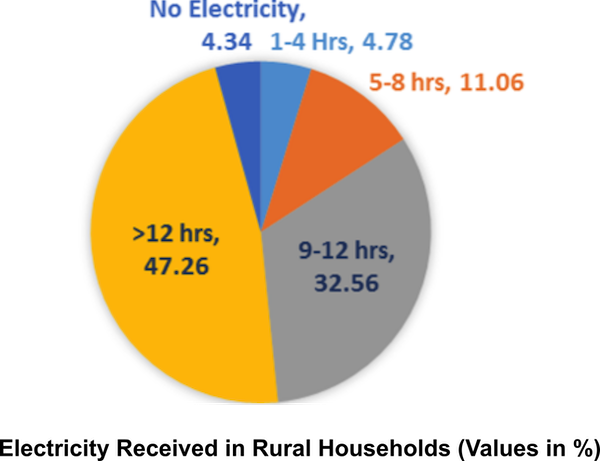The push for digital mode of education in recent times has surfaced the ‘digital divide’ that exists in our society. In this article, educator Charu Dogra Rawat and her former student, Pranjal Gupta, highlight the various roadblocks en route to equitable digital education, and the efforts that might bridge the divide.

As part of their internal assessment, students were given an online assignment, which was uploaded on the Google Classroom. Soon afterwards, 25 students from a class of 45 complained of inability to register into the Classroom, and/or download or hand-in the assignment. The reasons given were varied, from residing in a remote area with no internet availability, or not having a computer, to being unable to navigate through the software and access the materials. This is the ‘digital divide’ where everyone does not have equal access to the digital technology.
The COVID-19 pandemic and the shutting down of schools and colleges with no clear reopening date have necessitated education to be conducted remotely. This has brought into prominence the concerns of digital divide that had always existed, but not so much acknowledged, for education was not chiefly digital until this time. The gravity of its impact on the students, and education at large, could be felt when a 14-year-old girl, daughter of a daily-wage worker, committed suicide after missing an online class, or when a class 10 student in Kolkata ended her life, apparently because she could not join online classes as she did not have a smartphone. Unfortunate situations like these compel us to consider digital education not as an isolated sector, but intricately intertwined with the socio-economic status of the stakeholders.
This article delves into the ‘blockers’ that are hindering the acquisition of equitable digital education. It also discusses some measures – the ‘enablers’ – that have been or can be undertaken to address these issues.
Blockers
The prerequisites to digital education are uninterrupted supply of electricity and good internet connectivity. Despite government dashboards indicating that 99.9% of households in India have power supply (Saubhagya), the number of hours of power availability per day is highly varied and thus poses an impediment to the dissemination of quality digital education. Around 16% of the rural households receive only 1 – 8 hours of electricity daily, 33% receive for 9 – 12 hours, and only 47% receive electricity for more than 12 hours a day (Mission Antyodaya 2017 – 18).

Further, internet connectivity imposes limitations. To ensure smooth online education, an internet connection not only needs to be accessible, but also uninterrupted and high speed, and complimented by suitable gadgets. However, due to socio-economic limitations, weaker sections are neither able to subscribe to high-speed broadband internet, nor buy smartphones or laptops. According to the National Sample Survey 75th Round report, only about 15% of the rural and 42% of the urban households in the country have internet facility. Only 11% of the households (rural and urban combined) have some form of computer (desktop, laptop and tablet etc. excluding smartphones). Smartphone penetration in India increased by 15% from 2018, according to a report by the market research firm, TechArc. However, the numbers are still low, adding to the inequity in digital education.
Sometimes, slow internet is not due to technical or economical limitations, but due to political reasons. In Jammu & Kashmir and Ladakh, network connectivity is restricted to 2G, making it difficult for students to download or upload material or attend live classes via video conferencing. Regional disparity in internet connectivity has a pronounced impact as students in Universities come from various parts of the country.
Besides accessibility, the lack of technical know-how of digital technology also widens the gulf. From creating/curating online content to sharing, accessing and evaluating it, non-familiarity of the students as well as teachers with the digital tools puts the focus on learning the tool than on the learning objectives of the lesson. This perturbs the engagement between students and teachers, which is challenging in itself in a virtual environment.
Enablers
To advance equitable digital education as a right, all the stakeholders must attempt to bridge the gap of ‘digital divide’ by addressing the challenges discussed above. Government of India (GoI), in a joint initiative with State Governments called 24 X 7 — Power For All, aimed to provide 24 X 7 electricity to all households by 2019. However, it could not be achieved due to the debt burden on the power distribution companies. To counter this, GoI announced that it is devising a consumer-centric electricity distribution plan to ensure round-the-clock power for all. The availability of uninterrupted electricity, when achieved, could facilitate equity in digital education. Additionally, exploring off-grid energy such as solar technology for powering households and internet will be very useful particularly in rural communities.
Internet growth in India is associated with the mobile phone penetration. Declining data rates and availability of cheap handsets made the growth story mobile-first. However, 3G/4G LTE connections are not sufficient for applications such as videoconferencing that require high-speed and low-latency connectivity. GoI launched BharatNet project, which is the world’s largest rural broadband connectivity program. It offers subsidized high-speed internet connectivity in rural areas and helps people access essential online services including education. The project timeline has been pushed to August 2021, and once complete, it aims to provide access to bandwidth in a non-discriminatory manner to all eligible service providers to enable them to provide services in rural areas.
The government should take cues from countries like UK and deploy 4G Wi-Fi routers for students in disadvantaged communities. Further, additional funds should be allocated to public educational institutions, public libraries, Common Service Centres and post offices towards purchasing Wi-Fi routers and internet-connected devices. These measures will allow greater coverage of free or subsidized internet connectivity to otherwise under-connected areas.
Providing digital devices such as, laptops, smartphones etc. at subsidized rates to the students constitute another step towards lessening the inequity in digital education. A link can be generated between corporates and educational institutes. Periodically, corporate companies have to upgrade their digital devices. Rather than just dumping the old ones and adding onto the e‑waste, they can be refurbished and used for educational purposes. DonateYourPc.in or Digital Empowerment Foundation (DEF) are running such initiatives, and accept personal donations too. The World Bank is actively working with education ministries of many countries to support their efforts to provide equitable remote learning opportunities for students through various approaches.
For productive adoption of digital technology in education, digital literacy also needs attention. Many Teaching Learning Centres (TLCs) under Pandit Madan Mohan Malviya National Mission on Teachers and Teaching (PMMMNMTT) conduct faculty development programs covering digital pedagogy that combines digital skills with core principles of teaching-learning process. Such programs can produce a ripple-effect and the trained teachers can then train their fellow colleagues. Students should also be nurtured through such programs to develop a positive attitude towards digital technology, acquire basic proficiency to engage with digital tools, display safe online behaviors, and follow cyber-security protocols.
Digital education is here to stay. Thus, it is imperative to understand and be sensitive towards the digital disparity. Careful planning measures will have to be adopted to address these inequities. Closing the gap appears difficult due to its multi-faceted nature, but each step we take will bring us closer to attaining equitable digital education for all.